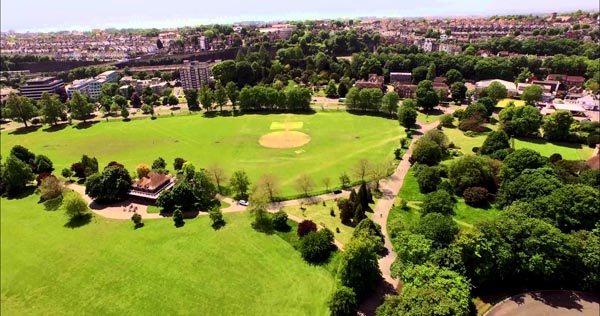Brighton & Hove City Council publishes new open spaces strategy that will shape the future of parks and open spaces in the city.
The results of the Big Conversation consultation on open spaces last autumn, which attracted more than 3,500 responses, have guided the draft strategy.
Councillors will discuss how to create more opportunities to fund parks and manage open spaces in new ways at the environment, transport and sustainability committee on January 17.

Councillor Gill Mitchell, chair of the committee, said: “Councils up and down the country are facing the challenge of how to fund parks and opens spaces with reducing budgets. We will learn from the successes of other local authorities and build on the excellent work already being done in Brighton & Hove, in particular by volunteers.
As the city grows the preservation of open space becomes even more important, providing areas for play, relaxation and exercise. Parks are among the most used public assets and highly valued by residents. We have taken their views into account in drawing up this strategy and will continue to involve them.”
Last autumn’s Big Conversation asked residents what their spending priorities were for parks and open spaces and their thoughts on how to manage with less, including creating new revenue such as cafes, sponsors, events and charges. Funding for councils from central government is falling, with parks traditionally one of local authorities’ smallest budgets. Between 2009 and 2020 Brighton & Hove’s parks could lose around one-third of its money.
The strategy asks the council to look at a range of policies and actions to put parks on a firm footing in order to maintain facilities for the future. It highlights funding opportunities and the need to build on ideas that came out of the consultation.
These include:
♦ Exploring the establishment of a Parks Foundation to lead on fundraising
♦ Creating more income for parks, working in partnership with businesses and potential sponsors, and other organisations such as the Football Association and lottery funders
♦ Developing other partnerships to care for open spaces, such as with colleges and universities, the Wildlife Trust, Ramblers, Biosphere partners and the South Downs National Park Authority
Over the next 10 years the strategy also calls on the council to:
♦ Develop a tree strategy (In the Big Conversation, respondents identified trees as the most important asset in parks and gardens for future funding)
♦ Enable members of the public to cut their own grass verges (87% of respondents said the council should support residents cutting grass verges with their own tools)
♦ Build on the success of volunteers by creating more opportunities and making sure they get the support they need (Most of the city’s 38 Friends of Parks volunteer groups told the council they need more support to continue their work and more than half of respondents to the Big Conversation (58%) expressed an interest in helping out in parks)
♦ Introduce more natural play features (74.2% of respondents tended to agree, or strongly agreed, to replacing some play equipment from children’s playgrounds with natural play features)
Playgrounds remain one of the biggest challenges for the city’s parks service. Because of the success of securing £2m of funds for playgrounds in 2009, a large amount of the city’s playground equipment will need replacing over the next five to 10 years, at a cost of another £2m. There has been some success so far, with playground equipment provided recently in Manor Road, Saltdean Oval and Hove Lagoon through public donations and planning contributions.
Work to put the strategy’s proposals into practice would start in 2017 if agreed by the committee. Councillors will also take into account the funding challenges and suggestions for parks as they set the council’s budget in February.
To read the open spaces strategy (agenda item no.66), click here:


















You must be logged in to post a comment.